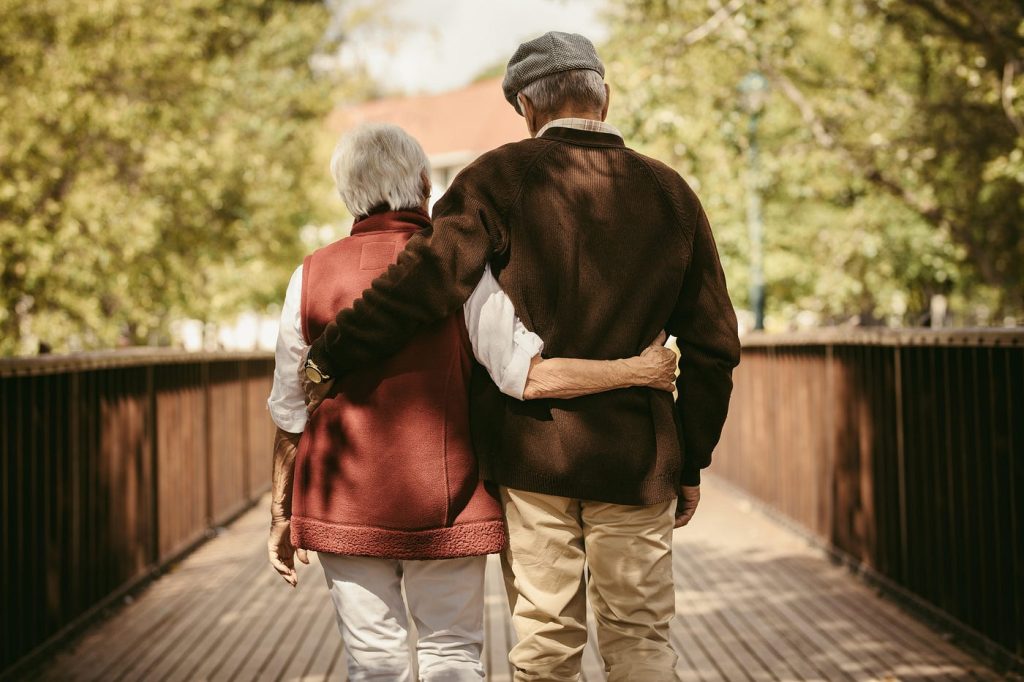
The Growing Challenge of Mobility
According to the CDC, 14 percent of adults in the United States have a mobility impairment [cit]. That’s roughly 35 million Americans. With the world population aging, mobility impairment is projected to grow to 20% of the US population and $1T in costs by 2050 [cit]. That is a concerning metric on its own, but it becomes even more dire when you examine all the ways in which mobility impairment is inextricably linked to physical [cit], mental [cit], and financial [cit] wellbeing. A meta study examining the linkage between physical activity and more than 30 chronic diseases demonstrated that “Overwhelming evidence proves the notion that reductions in daily physical activity are primary causes of chronic diseases/conditions and that physical activity/exercise is rehabilitative treatment (therapy) from the inactivity-caused dysfunctions,”[cit]. Yet the CDC states “adults with disabilities report more environmental barriers for walking than those without disabilities.” [cit]. It is imperative that we improve mobility for as many people as possible, as quickly as possible. That means creating mobility solutions that actually work, and optimizing our healthcare system accordingly.
Below we are releasing some new statistics on mobility improvement for Cionic Neural Sleeve users, but first let’s look at the state of the market.
Measuring the Full Impact of Mobility Impairment
According to the National Institute on Aging, “Mobility — the ability to move or walk freely and easily — is critical for functioning well and living independently,” [cit]. However, “less than half (45.2%) of U.S. adults with mobility disability reported engaging in aerobic physical activity,” [cit]. Mobility, and specifically walking speed, is increasingly referred to as “the sixth vital sign” for providers because “progression of [walking speed] has been linked to…meaningful changes in quality of life and in home and community walking behavior,” [cit]. Measuring walking speed is only one piece of that puzzle — we also need to be able to gauge how improvements to mobility impact other aspects of patient health. Thankfully there is a solution: Patient Reported Outcomes.
Patient Reported Outcomes (PROs) are described by the FDA as “any report of the status of a patient’s health condition that comes directly from the patient without interpretation of the patient’s response by a clinician or anyone else” [cit]. It seems intuitive that these measures would play a critical role in which treatments are deemed effective and thus, covered by insurance companies. Until recently, PROs were not even part of the conversation, but now there is a growing trend among payers and providers to measure patient-reported outcomes [cit]. This is because measuring PROs is key to understanding how a treatment is impacting the whole health of a patient, and it offers important insight into the importance of improving individual and collective mobility levels.
For example, if someone has difficulty walking, everyday activities that used to be done without thinking frequently become an uncomfortable burden. The cognitive load associated with the fear of falling and frustration is significant (according to the CDC, adults with disabilities experience frequent mental distress almost five times as often as adults without disabilities [cit]). Understandably, this mental distress can cause people to stop leaving the house, as it feels safer to stay home. It is essential to include these factors — ability to perform everyday tasks, discomfort when ambulating, anxiety and depression — into our measurement. They are tangible contributors to whole patient health and without understanding improvement against these metrics, we can’t provide the best possible care.
Increasing Mobility Improves Whole Person Health
CIONIC is on a mission to transform human mobility. The breakthrough Cionic Neural Sleeve is the first wearable to combine sensing, analysis, and augmentation of human movement. Our bionic clothing measures the position of the body and how individual muscles are firing during movement. Our advanced algorithms then direct electrical stimulation to activate the four major muscle groups of the leg in perfect sequence for greater foot clearance and stance stability.
In our initial research trials, we conducted a quantitative assessment of how the Cionic Neural Sleeve improved the kinematics associated with foot drop [cit]. The results demonstrated increases to dorsiflexion (ability to clear the foot during swing) and a reduction in inversion (the inward turning of the ankle) across 94% of our participants.
These metrics are critically important to establishing the efficacy of our system, but as we said before, this is only half the story. To understand how our system would impact mobility and whole health over time, we sent users home with the sleeve, and surveyed them across 5 key PRO metrics: mobility, self-care (dressing, bathing, etc.), activities of daily living, pain/discomfort, and anxiety/depression.
We were expecting to see gains in mobility, and we did. On average users reported a 30% improvement to mobility after 8 weeks of use. What really surprised us was the dramatic reduction to pain and anxiety that was reported. The number of users experiencing moderate to severe pain was reduced by 60%, and the number of users experiencing moderate to severe anxiety or depression was reduced by 75%.
These patient-reported outcomes are incredibly motivating, and combined with the quantitative improvements to gait kinematics, they tell a more complete picture of the impact we hope to have for the millions living with impaired mobility. In these results, we can see exactly why mobility is the most important measure of human health, and how helping users achieve greater independence of movement can lead to so much more.





